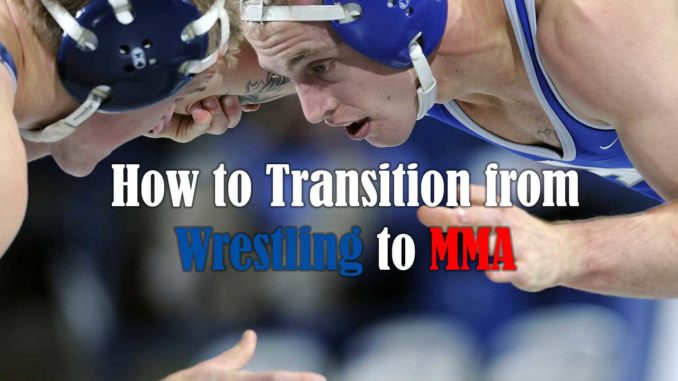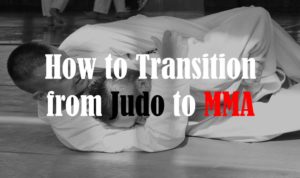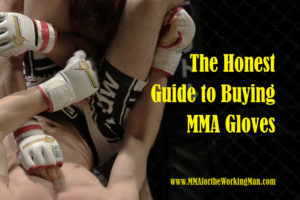
This article is for those who have a background in wrestling and want to transition to MMA. Let’s just be clear here that I’m referring to what is wrestling the sport – freestyle, greco-roman, collegiate and folkstyle wrestling. This is often I’m not referring to the threatrical professional wrestling here.
Back in university, I trained and competed as part of our university’s wrestling club. Even though I did compete in MMA and other grappling sports, we primarily saw ourselves as wrestlers who competed in MMA. I even trained for a time with our national wrestling team. My wrestling came to a point where I was selected to join the World University Wrestling championship. (I ended up not going since I didn’t have the funds for it, but you get my point. I was wrestling crazy back in the day.)
Throughout this time, my teammates and I, who primarily trained in wrestling, would often compete in MMA competitions. We were young punks that wanted a little taste of the money and the glory of MMA. There were a lot of lessons I picked up along the way on transitioning from wrestling to MMA. If you’re planning to make the transition from wrestling to MMA, I hope this article has some gems you can pick up.
Maybe you are ranked high up in Division I wrestling and you want to test your mettle in the cage. Maybe you’ve been wrestling since you were a kid and you want to try another challenge. Or perhaps, you are a wrestler and you have an upcoming MMA fight. Maybe as a wrestler, you’re thinking of dabbling in MMA on the side to get a taste of this exciting new world.
As a wrestler transitioning to MMA, you will discover that you will have weaknesses in your game. However, you will also have strengths. Capitalize on your strengths and neutralize your weakness. This article will be your guide.
By the way, if you are absolutely new to MMA, check out our article MMA 101: What are the Rules of MMA.
Focus on striking, I mean really focus
You have probably figured out that as a wrestler, you’re probably handicapped in a striking game against strikers, like boxers, Muay Thai fighters, and even karatekas. The common-sense approach is to incorporate some striking practice into your routine. That’s all well and good.
Many wrestlers preparing for an MMA match will tack on striking training almost like an afterthought. They might throw in a couple of pad or mitt-works and bagwork. They might even throw in a couple rounds of kickboxing at the end of the training session. This is just way too little, way too late. There has to focused training on striking.
MMA is a sport where the jack-of-all trades is rewarded. You can’t have totally awful striking or an opponent will be able to capitalize on it. You may be able to take down your opponent at will. That’s all awesome. However, if he is able to figure out how to neutralize you takedowns, or you run out of gas (get too tired to take your opponent down), he’ll pick you apart in the standing game.
Knowing that you have little or no striking background, you have to work as soon as possible to upgrade your striking skills. Overhaul your training to improve your striking skills. If you start off your training with wrestling drills, instead start your training with striking drills. If you usually end the training with grappling sparring or wrestling, end the training session just striking practice.
This may mean you won’t be able to practice another couple of sets of takedowns or throws. However, you have to face reality and be practical. If you are a wrestler who has been at the sport for some time, doing a couple of hundred more double-leg take downs probably won’t improve your takedowns much. Forget about takedowns and wrestling for the time being. However, if you are new to striking, the training time you invest in getting you kicks and punches smoother will pay of much bigger dividents in the fight.
As a mental exercise, think of your own wrestling skill. Did you obtain your wrestling skills simply by throwing in a couple of wrestling drills and a little wrestling sparring at the end of training? No, your wrestling improved through a ton of wrestling, wrestling and wrestling, good old blood, sweat and tears. The same is true with striking. If you want to improve in striking, you have to pay your dues.
Bring in Striking and Submission Skills from the Outside
If necessary, bring in skills from the outside to your game. There are primarily two broad sets of skills you will want to bring in: striking skills and submission skills. Let’s focus first on striking skills.
As earlier discussed, you will have to upgrade your striking skills and experience. However, if your team is one that focuses on wrestling, you may want to seek outside skills, unless you have a coach or teammate who can also coach striking well. A supportive coach, should not see you training outside this team as a threat. The supportive coach should actively encourage his athletes to cross-train in other disciplines if he knows that it will ultimately benefit his athlete. You should seek a boxing or kickboxing gym where you should immerse yourself in striking. Another place you can get striking skill is seeking a karate team which engages in full-contact competitive combat styles, such as Kyokushin karate. MMA fighters who have no background with kyokushin karate, might scoff at the mention of the word “karate”, but even some legendary world-class MMA fighters like George St.-Pierre identify themselves as primarily Kyokushin karate martial artists. Kyokushin karate, in fact, places a lot of emphasis on being able to absorb hard bare-knuckle blows, which will be useful for you. (Competitive Kyokushin karate does not allow strikes to the head though so will have to modify the stance a little for MMA.)
Since wrestling is a grappling sport, will probably be able to adapt to grappling with submissions. If you don’t have a coach or teammate who is well-versed in submissions, you should also take out to learn submission holds. The most versatile will be Brazilian Jiujitsu or BJJ, though of course other grappling sports, like submission wrestling will also be able to teach you solid submission techniques. (Read: What is the Difference Between Grappling, Wrestling and Jiujitsu) As a wrestler, you may have sharper take-down skills, but you will be able to learn other aspects, such as learning the guard position, which is grappling position that a purely wrestling-oriented athlete will find useful to learn for an MMA match, both to use, and, perhaps more importantly to neutralize if your opponent is using it, called breaking or passing the guard. Even if you cannot a reputable BJJ or submission wrestling club near you, consider also other grappling sports, such as Sambo or Judo.
Don’t just learn to throw a punch, learn to take one as well
If you’re new to striking and you don’t have much time (such as, only a couple of months), I suggest that you immediately and purposefully begin training not only how to deliver strikes, but how to defend against them as well. “Taking a punch” here is not just absorbing a punch literally, but also the other defensive skills in striking. This includes learning a whole gamut of defensive skills, such as defending against kicks, keeping your eyes on your opponent, controlling your flinch reflex, controlling the distance, and other defensive skills.
I often see wrestlers, and grapplers in general, when they are preparing for their first MMA match, only focusing on throwing punches and kicks. However, just as important, or perhaps even more important as a grappler, is learning to defend yourself and keeping your composure during a striking exchange.
Good wrestlers can probably wrestle the whole day. However, if you ask them to put on a pair of gloves and do a couple of rounds of kickboxing, they can tire out pretty quickly. Even the US Olympic Team wrestler turned UFC Champion Randy Couture experienced this when he started training in boxing, as he recounts in his book Wrestling for Fighting: The Natural Way. (By the way, if you are a high-level wrestler transitioning into MMA this book is absolute gold.)
You have to learn to comfortable standing and striking. There is absolutely no other way to do this but to spend a lot of time actually doing lots of kickboxing sparring. Otherwise, you will tire easily and get easily flustered in an MMA match. I saw this a lot with my wrestling teammates, even national-level wrestlers. Though my wrestling teammates could take down their opponents at will. However, if the fight dragged on and their opponent found a way to survive the initial onslaught of the wrestlers, or the wrestlers ran out of gas (since takedowns tend to be very energy-intensive), my wrestler teammates would get picked apart in the standup game.
In my personal experience as well, this was my biggest problem. In the MMA leagues I fought in, I could usually easily take my opponents down and tangle with the best grapplers. However, I would avoid a striking battle at all cost, consuming lots of physical and mental energy. I would shoot without trying to do even a basic set-up, simply because I had very low confidence engaging in a striking exchange. It was only later on that I realized that I should take lots of hard focus also getting my striking game up to par.
This concept applies to even the best wrestlers in the world. As a kid , I remember watching one of the early UFC matches where Olympic wrestler Mark Coleman got picked apart by kickboxer Maurice Smith who has able to neutralize and weather the initial barrages of Coleman. I’m sure you have also seen other world-class wrestler get picked apart later in the match after his striking savvy opponent is able to successfully stop the wrestlers shoots.
If you are wrestler and you are new to striking, you have to prepare for the shock you will experience when you first start going up against really good strikers. Getting used to battling it out in a striking match is quite different from the impacts you’ve gotten used to in wrestling. As a wrestler, you can probably get slammed hard on the mat without batting an eyelash. However, you ain’t felt nothing yet until you’ve felt a baseball bat-like strike from an experienced Muay Thai fighter hitting you with a full force leg kick. Little can also prepare you for first time you get struck by punches that make feel like you got hit by a sledge-hammer. Even with the adrenaline pumping, it’s hard to continue after being hit by one of those bombs. You must learn to keep your composure during striking. This kind of fortitude is only built only by lots of striking sparring.
Being confident with your ability to “take a punch” will overall help you, even if your game plan is to avoid striking with your opponent. If you are confident with your stand up game, you will be able to set up you shoots and not be afraid to clinch. If you weren’t confident, you’d probably just try go for the takedown at every possible opportunity. This can exhaust you very easily. However, with a little more confidence in your striking game, you can blast out a couple of good combinations or wait till you opponent whips out a combination of strikes, before you do your takedowns. This will save you a tremendous amount of energy, which can be better spent trying to finish the fight.
MFTWM Expert Tip: If you are a wrestler preparing for an MMA fight, for the first couple of training sessions, even the first couple of weeks if you have time, try sparring striking with you only defending. Try have at least three five-minute rounds where your only job is to stay on your feet and defend against strikes. Do not attempt take downs or close the distance during these sparring sessions. Ideally, you sparring partner should go at you with 30% – 70% power. The objective here is to learn how to relax on your feet and build the techniques to defend and absorb blows, not to punish you and shut you down. Even experienced wrestlers might find maintaining just three rounds striking, since they will mentally always try to default to closing the distance and taking down. This is because you don’t want to This should help “cure” your instinct to always want to shoot (do a double-leg take down) to get out of an uncomfortable position (standing and striking), even if it is not an ideal time to execute these techniques.
Ground and Pound has to Practiced Too
Don’t assume that just because you can dominate your opponent in positioning on the ground that you will be able to effectively ground-and-pound your opponent. Ground-and-pound is basically striking an opponent while you are in a dominant grappling position. Take at least some time to learn and practice basic techniques in grounding and pounding your opponent. This is a skill that is purely belong is the realm of MMA. Don’t shy away from learning online if you can’t find an experience MMA fighters to guide you on ground-and-pound. Some of the world’s most successful MMA fighters, whose fight records you can easily verify online, are on YouTube sharing their knowledge and techniques.
Effective ground-and-pound skills are often neglected by new MMA fighters. However, you will find a little practice in ground-and-pound can go a long way. Especially as a wrestler, you may find yourself in dominant grappling positions like the full-mount and side-mount a lot.
Don’t get me wrong. I am not saying you must end your fight with ground-and-pound. Your game plan will ultimately depend on you and your coach. I am just saying that often times wrestlers will neglect to have any real meaningful ground-and-pound training at all. And, putting a little effort here can pay large dividends in an MMA match.
You might want to look at ground-and-pound combinations and do lots of heavy bag practice. The strength you develop as a wrestler will not be entirely transferrable to power in punching someone on the ground. Don’t forget knees and elbows as well, if legal in the MMA league you will be competing in. A couple of well-placed good elbows on the ground can split open an opponents’ face and end the fight in your favor.
Learn the Guard Game, and How to Pass the Guard
As a wrestler, you are used to lighting quick scrambles and machine-gun like action. After all, in wrestling your opponent’s back just has to touch the mat for one full count to win the match. In MMA though, the fight will extend long after your opponents back hits the mat. Compared to wrestling, grappling in MMA tends to have a much more prolonged pace.
There is one grappling position that often frustrates wrestlers a lot – the guard. The guard the position the grappler at the bottom applies by keeping your torso in between his legs. From the guard, the grappler at the bottom grappler will be able to control your body and apply submission holds such as the triangle choke or the arm bar. A wrestler will probably be able to take down his opponent. A defending fighter with grappling skills, such as BJJ practitioner, will be able to place you in his guard without using as much energy as you did taking him down. From there, the guard, or it’s variations, such the half-guard, spider guard and other variations, your opponent can set you up to overturn you (“sweep” you) or catch you in a submission hold.
Just as importantly as learning about the guard, you must learn how to pass his guard, which means getting past his legs. There are many techniques to getting past your opponent’s guard. If you’re preparing for your first MMA fight, it’s best just to a first focus on few effective guard passing, rather than try learn all 101 ways to get past someone’s guard.
Also you must learn how to defend against submission holds your opponent will try to set up. Don’t take the guard lightly. In his guard, your opponent will be using a lot less energy than you and will have his four limbs free to attempt all sort of maneuvers. Keep you limbs safe. Keep you base strong. You can even in add strikes to fluster your opponent.
Also knowing the guard will help you keep the fight going even if somehow you find your opponent getting the top position so you will be less likely to give up your back. More on that in the next section.
MFTWM Expert Tips: The guard is a position that often stalls a wrestler who is first entering MMA. A skilful grappler who has a wrestler in his guard has an advantage when it comes to submission opportunities, such as the guillotine choke, triangle choke, kimura and armbar to name a few. These will be submission holds someone from a purely wrestling background will have no experience defending against. Perhaps the single most important skill a wrestler when he is making the transition to MMA is learning to safely “stack” his opponent who has him in his guard. This will cut down his opponents mobility, and help save him from a whole slew of submission holds. Combine stacking with nice solid strikes if the opportunity arises. Watch out for leg locks though when stacking!
Practice not giving up your back and defending your back
Another pitfall wrestlers new to MMA always encounter is they have less experience in defending their back. As a wrestler, your back is probably extremely “allergic” to the mat. A wrestler’s instinct is to keep his back on off the matt at all costs, even of that means allowing your opponent to get on or “ride” your back. Any grappler worth his salt will be able to capitalize on this and secure or mount your back. This is a very hard position to fight out off. It also exposes you to the rear-naked choke which is statistically the most effective submission hold. (Read our article: Top Ten Most Statistically Effective Submissions holds in MMA) If you can help it, don’t let your opponent secure you back.
Things always don’t go according to plan, though. To prepare for this possibility, you may want to learn how to defend against your opponent securing the back and trying to sink in a choke. There are lots of techniques you can use which your coach or an experienced grappler can teach you.
You may want to explore learning to place your opponent in your guard instead of surrendering your back. This will add a new dimension to your grappling game which you may not have been exposed to if you’ve been purely doing wrestling.
Additional Tips for Greco-Roman Wrestlers
If you are a Greco-roman wrestler you will have some advantages and disadvantages adapting to MMA, compared to your Freestyle wrestling compatriots.
Let’s start with the disadvantages. First of all, you won’t have double-leg and single-leg take downs as polished as a Freestyle wrestler. This will force you into a more “get-in-his-face” kind of fighting. While you will have a better base than non-wrestlers, you will have to adapt defending against freestyle-type double-leg and single leg take downs, especially low ones, which don’t happen in Greco-roman.
Let’s go to the advantages. The obvious advantage of Greco-roman wrestlers have is that they can’t be matched in a clinch. Use this to its fullest potential to dominate your opponent, especially when fighting against the ropes or the wall of the cage. Another advantage I see Greco-roman wrestlers have entering MMA compared to Freestyle wrestlers is their posture. Since Greco-roman wrestlers have a more upright posture than Freestyle wrestlers, they are able to transition faster into the striking arts. Meanwhile, some long-time Freestyle wrestlers very new to MMA almost seem uncomfortable standing upright, as they are used to wrestling bent at the waist in defense to double and single-leg takedowns.
MFTWM Expert Tip: You may want to also look up “dirty boxing” a combination of clinching and boxing to fully capitalize on this strength. The use of effective head control plus punches make (Again, I recommend the book by Randy Couture, who was an accomplished Greco-roman wrestler and popularuzed “dirty boxing” in MMA. This book absolutely was mind-blowing to me as a wrestler.)
Summary
For a wrestler to effectively transition to MMA, he must address some deficiencies in his game. The most obvious deficiency a wrestler will have is one in his standup game or striking, an essential part of MMA. To progress in striking, half-hearted training is not enough. A wrestler and his coach must fully embrace the fact that striking should be given a high-priority in training to catch up in this area of MMA. Skill in striking is not just the ability to hit hard, but also being comfortable in the ring in a standup game. Thus, it’s necessary to develop defensive skills as well, that may turn out even more important in a match.
In the wrestling game, you win when you pin your opponent. However in MMA, the fight will continue long after you have established a dominant position on the ground. This makes it important to bring in skills from the outside, such as kickboxing, submission holds and the guard game. A wrestler should also consider spending some time developing an effective ground and pound game to fully capitalize on any dominant position a wrestler can obtain. Another specific area of focus a wrestler may consider is defending his back and passing his opponents guard, two situations a wrestler may find himself in, as wrestling does not address these two positions.
Greco-roman wrestlers will be able to dominate in clinch, which they can use in lieu of the more direct takedown approaches a Freestyle wrestler has.
Further Related Readings
You may want to check out our Article: How to Transition from Judo to MMA.
If you are just starting out in MMA, you might also want to get yourself a pair of MMA gloves. Read our Honest Guide to Buying MMA Gloves. The article has no affiliate or marketing links whatsoever. Just a plain old honest guide.
Lastly, we have a newsletter which we send out a couple of times a year. Give it a gander if you like our stuff.




Leave a Reply